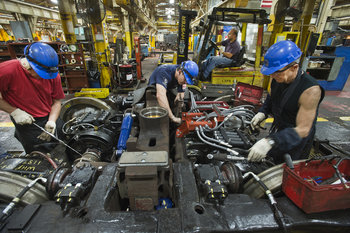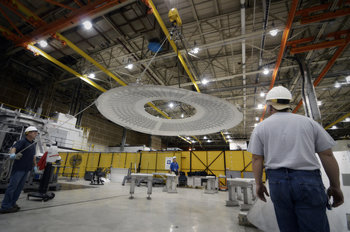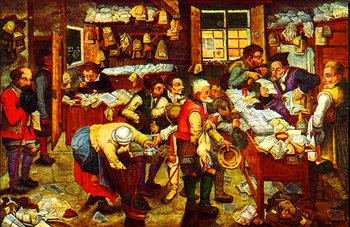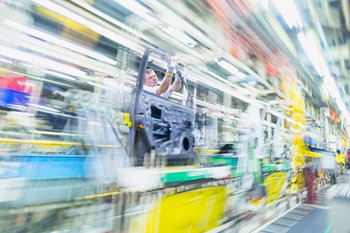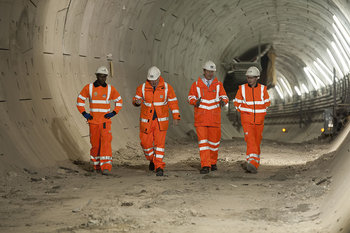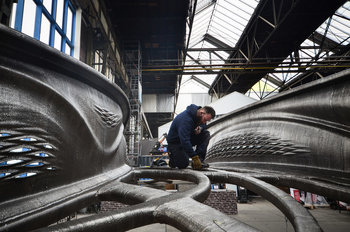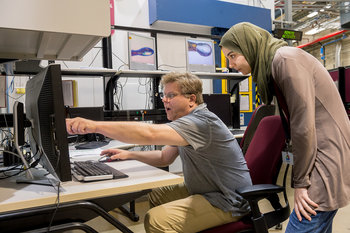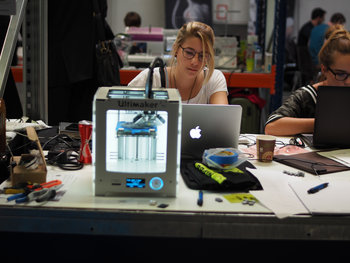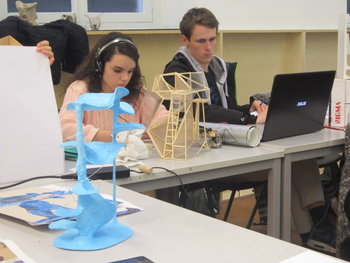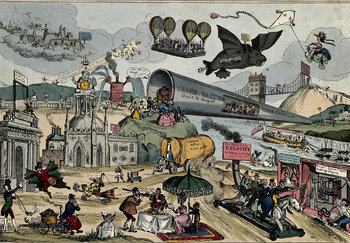
Automation
Automating toil to reduce labor costs and improve speed and quality. For example, an ecommerce fulfillment center that automates the process of picking orders with robotic systems to dramatically increase order throughput and reduce fulfillment cost.Elimination of Waste
Reducing wasted time, effort and resources. For example, a factory that implements an innovative maintenance program that dramatically reduces the cost of production line downtime.Dematerialization
Dematerialization is the process of using less materials without reducing value. In many cases, materials can be completely eliminated with a digital equivalent. For example, a streaming media service as opposed to an overpackaged DVD product.Lightweighting
The design of things to be lightweight to reduce costs. For example, the use of advanced composite materials in aircraft that dramatically reduce fuel consumption.Productivity Tools
Making tools more productive for users. For example, professional video editing software that uses AI to automatically identify entities in a scene such that they can be marked for processing. This may save a video editor hundreds of hours a year and reduce costs for a studio or project.Economies of Scale
Producing a billion units a year tends to be much cheaper per unit than producing a million units a year. This effect is known as economies of scale and is a fundamental approach to cost innovation. For example, a bakery that redesigns its production line to produce 90% more units an hour may reduce unit costs by 20%.Mass Customization
Mass customization is the process of manufacturing unique and customized items without sacrificing scale. For example, a single soap production line that manufacturers different soap formulations and form factors for different customers without every slowing down to reconfigure the line.Sourcing
Dramatically reducing costs by focusing on your competitive advantages and sourcing to firms with superior economies of scale where possible. For example, a bank that sells its data centers in favor of using computing platforms provided by major technology companies that are an order of magnitude cheaper.Efficiency
Improving the efficiency of automation, equipment, processes, practices and services in a dramatic way. For example, a government that allows most people to renew their drivers license online such that they dramatically reduce staffing and location costs.Race to the Bottom
In many cases, customers buy on price alone such that firms with the lowest costs have a fundamental competitive advantage whereby they can beat the prices of competitors and remain profitable. This can create a race to the bottom whereby quality declines rapidly as firms aggressively innovate to reduce costs. For example, a reputable glassware company that begins to replace metal and borosilicate glass with less durable and attractive materials such as plastic. This will certainly reduce costs but may damage the brand as customer satisfaction drops and new competition step in to improve quality.| Overview: Cost Innovation | ||
Type | ||
Definition | The process of dramatically improving cost for value as opposed to implementing incremental cost improvements. | |
Related Concepts | ||





